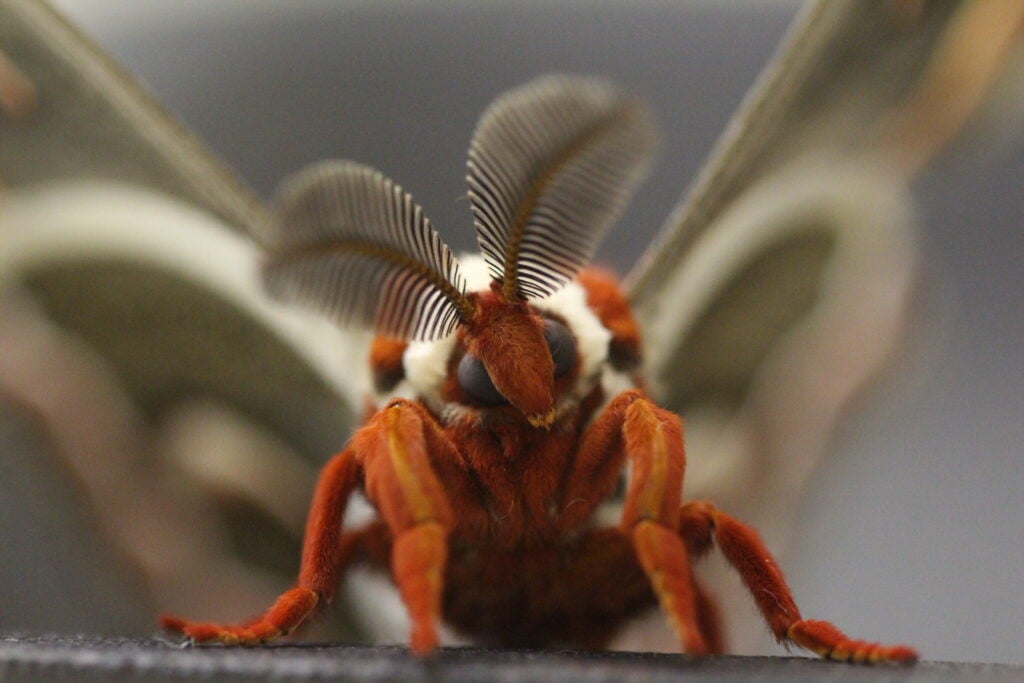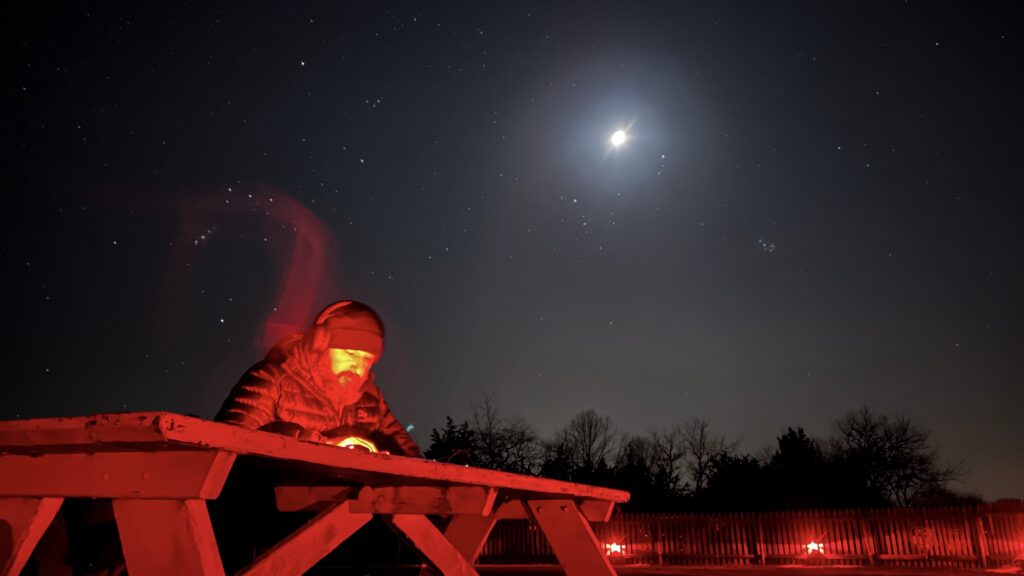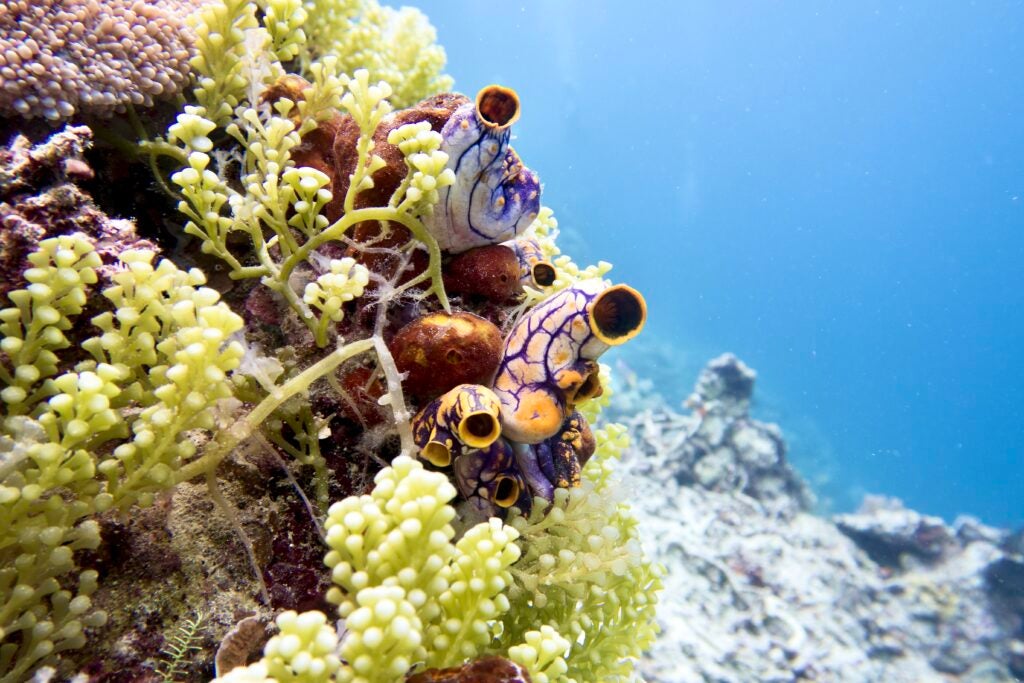1st Place | Photo Title: “Baby Blue Maxima Clam”
URI aquaculture
and fisheries major Michael Corso ’24 of Medford,
MA.

The photograph is of a juvenile maxima clam
grown in a coral/invertebrate aquaculture and
distribution facility in Wilmington, MA. In the wild,
a clam like this may live for more than 200 years.
However, due to climate change and plastics
pollution, captive propagation and growth may
be the only hope of survival for many integral
reef species, including giant clams. By continuing
research and development of new sustainable
aquaculture methods, we may be able to protect
even the most vulnerable creatures.
“As a student at the University of Rhode Island,
my goal is to learn about and develop new
sustainable methods to protect our planet’s
aquatic species,” said Corso. “My work is in
direct relation with my academic pursuits.”
2nd Place | Photo Title: “Serenity”
Thupten Tendhar, coordinator
of the URI Center for Nonviolence and Peace
Studies and Wakefield, RI resident.

“I teach about peace of mind and the inter
connected nature of phenomena,” said
Tendhar. “This photo shows how humans
can learn, enjoy, and derive a positive
impact from nature to feel peaceful and
enhance our sense of belonging, realizing
that we are all a small part of a bigger
universe.” John Palumbo, president and
publisher of Rhode Island Monthly stated
that the photo depicted focused calmness.
3rd Place| Photo Title: “Up Close and Personal with a Cecropia Moth”
URI
biology and psychology double major Gillian Mitkowski ’23
of Ashaway, RI.

The cecropia moth, Hyalophora cecropia, is
the largest moth native to North America and has an average
wingspan of 5 to 7 inches. Rearing of H. cecropia moths is
part of the research done at the URI Biological Control Lab
to assist with the United States Department of Agriculture
spotted lanternfly biological control research.
Honorable Mention | Photo Title: “Off the Shoulder of Orion”
Adjunct Instructor Kevin Gilmore of
URI’s Department of Art and Art History.

The photo was taken for “The 79 Moons of Jupiter,” a live, audio-visual installation and performance
piece that includes electronic sounds synthesized and uses live data
of the orbits of Jupiter’s moons. The artistic vision for the audio-visual
performance includes educational, research, and outreach goals to activate
the local treasures found in the Frosty Drew Observatory at Ninigret Park in
Charlestown, RI. This photo represents part of the preparation and research
for this project and depicts some of the creative process involved. Gilmore
is from Wakefield, RI.
Honorable Mention | Photo Title: “Polycarpa and Caulerpa”
URI biological sciences and biological and environmental sciences graduate student Erin Borbee ’21 of Burlington, MA.

Our research is a collaboration among Professor Christopher Lane and
Associate Professor Austin Humphries labs at URI and the Marine Biodiversity
and Biosystematics Lab at Bogor Agricultural University in Indonesia. We use
environmental DNA to evaluate biodiversity in coral reef ecosystems across
Indonesia. Environmental DNA allows us to capture diversity that might easily
be missed in macroscopic and microscopic organisms. In this photo the water
and sediment around the organisms are full of microbial life as well as DNA
from fish and invertebrates on or near this reef. The DNA is captured on filters
and sequenced to get a full picture of the diversity on a reef and begin to look
at what factors, human and otherwise, may be influencing the diversity of
various groups of organisms on the reefs.
Honorable Mention | Photo Title: “The American Woodcock Project”
URI wildlife and conservation biology major Justin
Moore ’21 of Middletown, RI.

“This depicts how URI engages in the wildlife field and what we do to conserve these
amazing creatures,” said Moore, a URI Coastal Fellow undergraduate. The three hatchlings are
being fitted with radio telemetry transmitters for tracking and monitoring in hopes to better
understand how this species makes use of the area. The project is gathering and analyzing
data to better comprehend the nesting ecology of this bird species.
